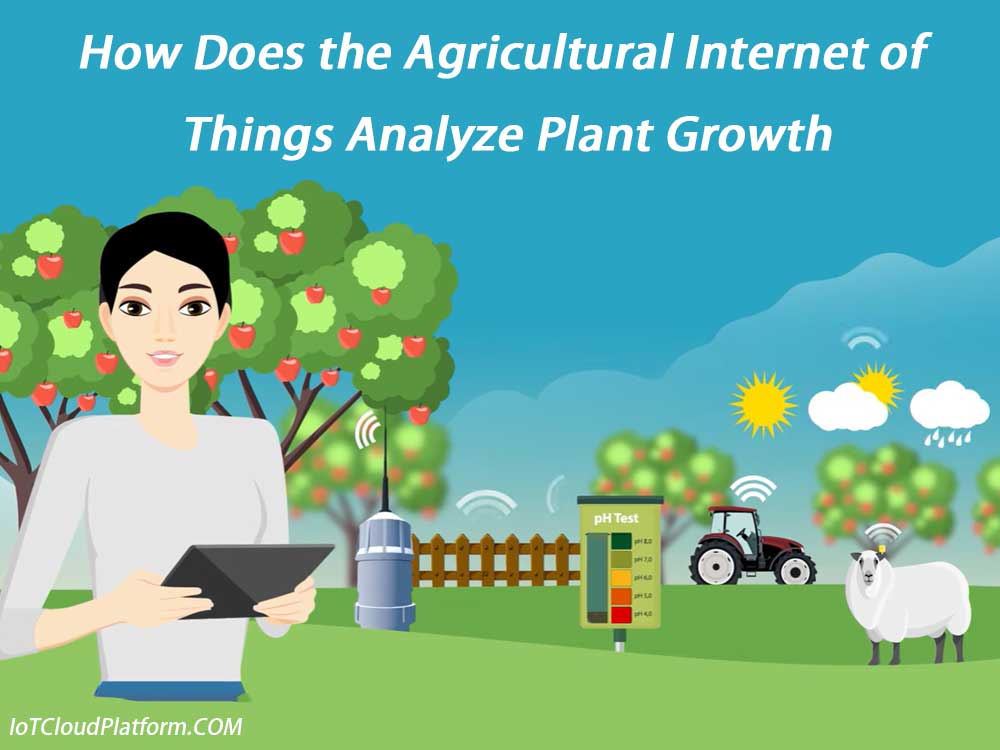
How Does the Agricultural Internet of Things Analyze Plant Growth
The agricultural Internet of Things plays an important role in analyzing plant growth. It provides scientific and accurate management decision support for agricultural production by integrating sensor technology, data collection and transmission, cloud computing and big data analysis.
The following are several key points on how the agricultural Internet of Things analyzes plant growth in detail:
Data Collection and Monitoring
Sensor Deployment:
- In plant growth environments such as farmland, greenhouses or greenhouses, deploy a variety of sensors, such as soil moisture sensors, temperature sensors, light sensors, CO2 concentration sensors, PH sensors, and nutrient sensors. These sensors can sense and collect key environmental parameters required for plant growth in real time.
- Sensor data is transmitted to the data processing center or cloud platform in real time through IoT communication technologies (such as Zigbee, LoRa, NB-IoT, etc.).
Environmental Monitoring:
- In addition to soil and climate parameters, the agricultural Internet of Things system can also monitor the growth status of plants, such as leaf color, stem thickness, fruit size, etc. These data can be collected through high-definition cameras, spectrometers and other equipment.
- Some advanced systems can also use drones or satellite remote sensing technology to conduct macroscopic monitoring of large areas of farmland and obtain macroscopic data of plant growth.
Data processing and analysis
Data cleaning and preprocessing:
- The collected raw data needs to be cleaned and preprocessed to remove noise, fill missing values, etc. to ensure the accuracy and completeness of the data.
- Standardize the data for subsequent data analysis and model training.
Data analysis and modeling:
- Use big data analysis technology to conduct in-depth mining and analysis of the processed data. Statistical methods, machine learning algorithms, etc. can be used to establish plant growth models and predict plant growth trends and yields.
- By comparing historical data with current data, analyze abnormal plant growth, such as precursors to pests and diseases, manifestations of nutrient deficiency, etc.
Visual display:
- Visualize the analysis results in the form of charts, images, etc., so that farmers and managers can intuitively understand the growth status and existing problems of plants.
- The visualization platform can also provide real-time monitoring functions, allowing farmers to keep track of plant growth dynamics at any time.
Decision support and optimization
Growth environment optimization:
- According to the data analysis results, adjust the plant growth environment parameters, such as irrigation amount, fertilizer amount, light intensity, etc., to create more suitable growth conditions.
- Through intelligent control equipment (such as intelligent irrigation system, temperature control system, etc.), achieve precise control of the plant growth environment.
Pest and disease control:
- Use Internet of Things technology to monitor the occurrence of pests and diseases, give early warnings and take prevention and control measures. For example, monitor the number of pests through the intelligent insect monitoring system to guide farmers to apply pesticides accurately.
- Use big data analysis technology to study the occurrence and transmission paths of pests and diseases, and formulate more scientific prevention and control strategies.
Production decision support:
- Provide production decision support for farmers based on plant growth data and forecast results. For example, according to the predicted output and market demand, reasonably arrange the production and sales plan of agricultural products.
- Through cooperation with meteorological departments, obtain weather forecast data and provide meteorological service support for agricultural production.
Challenges and prospects
Although agricultural IoT has many advantages in analyzing plant growth, its development still faces some challenges:
Technology cost:
The cost of IoT equipment is high, which is unaffordable for farmers with poor economic conditions. In the future, it is necessary to continuously reduce equipment costs and improve cost performance.
Technology popularization:
The popularity of IoT technology in agriculture is low, and farmers have limited knowledge and understanding of IoT technology. It is necessary to strengthen technical training and promotion efforts to improve farmers’ scientific and technological literacy.
Data security and privacy protection:
The IoT system involves the transmission and storage of a large amount of sensitive data, and there are problems of data leakage and privacy protection. It is necessary to strengthen the construction of data security protection and privacy protection mechanisms.
Summary
In the future, with the continuous development and popularization of IoT technology, the application of agricultural IoT in analyzing plant growth will be more extensive and in-depth.
By continuously optimizing equipment performance, reducing equipment costs, improving farmers’ awareness and strengthening data security protection, the Agricultural Internet of Things will provide more comprehensive, precise and intelligent support for agricultural production, and promote the sustainable development and transformation and upgrading of agricultural production.



